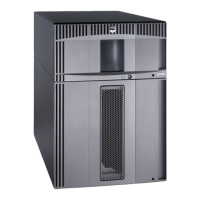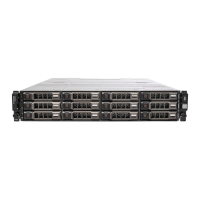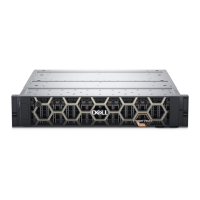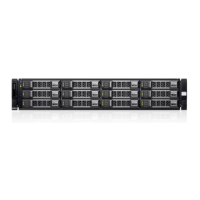Error: Unable to find Secretkey in the config keystore with
alias:MyKey.
The symmetricKeySet entry in properties file is contains a key alias that does not
exist in the config.keystore.file
To correct this problem, modify the symmetricKeySet entry in the configuration file
to only contain aliases that exist in the keystore file designated by the
config.keystore.file entry in KeyManagerConfig.properties OR add the missing
symmetric key to the keystore. See Appendix B, “Encryption Key Manager
Configuration Properties Files” for more information.
No symmetric keys in symmetricKeySet, LTO drives cannot be
supported.
This is an information message. The Encryption Key Manager server will still start,
but LTO drives cannot be supported on this instance of Encryption Key Manager.
This is not a problem if there are no LTO drives configured to communicate with
this Encryption Key Manager.
Encryption Key Manager-Reported Errors
This section defines error messages that are reported by the Encryption Key
Manager and returned in the drive sense data. They are typically called fault
symptom codes or FSCs. The table includes the error number, a short description
of the failure, and corrective actions. Refer to Appendix B, Default Configuration
File, for information on specifying the debug property.
Table 6-1. Errors that are reported by the encryption key manager
Error Number Description Action
EE02 Encryption Read Message Failure:
DriverErrorNotifyParameterError: ″Bad ASC
& ASCQ received. ASC & ASCQ does not
match with either of Key Creation/Key
Translation/Key Aquisition operation.″
The tape drive asked for an unsupported
action. Ensure that you are running the latest
version of the Encryption Key Manager
(refer to “Downloading the Latest Version
Key Manager ISO Image” on page 3-1 to
determine the latest version). Check the
versions of drive or proxy server firmware
and update them to the latest release, if
needed. Enable debug tracing on the key
manager server. Try to recreate the problem
and gather debug logs. If the problem
persists, refer to “Contacting Dell” in the
“Read this First” section at the front of this
publication for information on getting
technical assistance.
Chapter 6. Problem Determination 6-5
|
|

